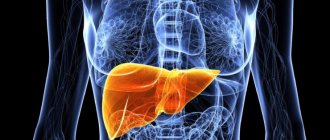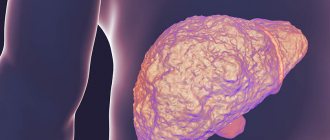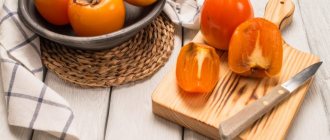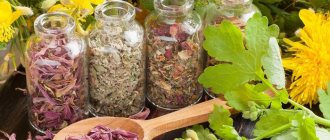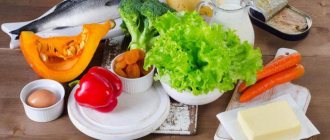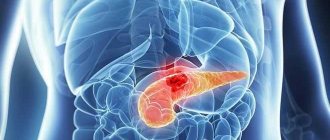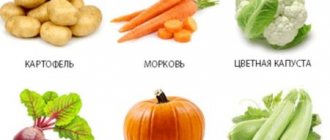General rules
Changing your diet, eating fast food that contains large quantities of fats and light carbohydrates, increasing stress load - all this serves as a background for the appearance of diseases of the gastrointestinal tract.
These diseases, to varying degrees, worsen the quality of life of patients, and it is comparable to that for diseases of the cardiovascular system. In recent years, the prevalence of these diseases has been increasing and all age groups are affected by the pathology - children and adolescents, people of working age and the elderly. During treatment, much attention is paid to dietary nutrition, the role of which is especially significant in this pathology. Table No. 5 is a universal basic diet used for diseases of the gastrointestinal tract. Varieties have been created on its basis, which makes it possible, with some correction, to use it for diseases of the liver, pancreas, gallbladder and ducts, when they are combined with colitis and gastritis , as well as after liver surgery.
The diet for diseases of the liver and pancreas should be gentle, therefore chemical and mechanical irritants are excluded or sharply limited (depending on the stage of the process). Disease of the liver and pancreas requires a diet; food intake should be small and small, and the food itself should be warm. Eating cold or hot foods is not allowed.
The general principles of nutrition for the pathology of these organs are:
- Exclusion from the diet of strong chemical irritants: essential oils of plants (onion, garlic, celery, radish, radish) and extractive substances (broths), dried and smoked foods, fried foods. To extract extractive substances, which is especially important for pancreatitis , the meat is boiled in small pieces, draining the water, and only then used as a semi-finished product for various dishes.
- Elimination of mechanical irritants in the form of coarse meats, fresh vegetables with coarse fiber and unprocessed foods.
- Eliminate the frying method when cooking. Dishes are prepared boiled or steamed. Baking without a crust is possible only with liver diseases in remission.
- A reduced amount of fats (refractory and poorly digestible ones are limited), vegetable oils are introduced, but in limited quantities for pancreatitis and calculous cholecystitis.
- Limiting foods rich in purines: animal liver, meat of young animals and birds, yeast, sardines, tuna, sprats, herring, salmon caviar, salmon, shrimp, mussels, squid, dried porcini mushrooms, smoked eel.
- Limiting table salt (up to 6 g) and egg yolks.
- Introduction of lipotropic substances that protect the liver from fatty degeneration. They are found in beef, lean fish, low-fat cottage cheese, seafood, whey, buttermilk, buckwheat and soy flour.
- Small meals with frequent meals. This promotes the regular flow of bile and pancreatic enzymes.
- Dishes are wiped or chopped during an exacerbation and in cases of severe inflammation.
During an exacerbation, nutrition should create maximum peace and help eliminate pain, so food is given pureed and liquid. The principle of small and frequent meals must also be observed, this is especially important for pancreatitis, when meals reach up to 8 times a day in small portions (50-100 g each).
For this disease, a low-calorie diet containing 60 g of protein and 50 g of fat is first prescribed. The diet consists of boiled foods of a semi-liquid consistency and mainly carbohydrate foods (decoctions of cereals, weak tea with sugar, pureed liquid porridges, pureed compotes, crackers, jelly and jelly with xylitol).
Protein products are gradually introduced: curd puddings, calcined cottage cheese in the form of paste, steamed omelet from 1-2 eggs, cream soup from boiled meat, meat and fish soufflé, steamed cutlets from lean meat. If well tolerated, add butter, pureed vegetable soups and vegetable puree (potato, carrot, beetroot). All dishes are prepared boiled or steamed. At first they are thoroughly wiped, and then crushed.
Nutrition during the acute period of liver disease is organized within Table No. 5A , and it is more varied than during exacerbation of pancreatitis:
- Steamed dishes made from twisted meat and lean fish.
- Puree or chopped boiled vegetables (potatoes, pumpkin, carrots, cauliflower and beets).
- Reduced amount of refractory fats and salt.
- Soups made with vegetable broths with pureed cereals and vegetables, puree soups seasoned with butter or cream.
- Porridges: semolina, buckwheat, rice, oatmeal, boiled in water and ground to a semi-liquid consistency. Vegetable oil is added to dishes if it is well tolerated.
- Bold cottage cheese, low-fat fermented milk products.
- Protein omelettes.
- Ripe, sweet fruits, baked and boiled, raw - only pureed.
During the recovery period, nutrition during the treatment of a diseased liver and pancreas is balanced and contains 90 g of proteins, 400 g of carbohydrates and fats - 80 g. However, the pathology of the pancreas requires adjustments and the nutrition of such patients is organized within Table No. 5P .
, exocrine gland insufficiency develops over time , which manifests itself in insufficient production of digestive enzymes. They are involved in the breakdown and digestion of carbohydrates, fats and proteins. Indigestion is manifested by signs of malnutrition in patients: weight loss and weight deficiency. Patients also develop undigested fat in their stool (steatorrhea).
In this regard, a complete diet is recommended, so the amount of protein is increased to 120-150 g (of which animal proteins should be 80-85%), and the fat content is reduced to 70 g and below (depending on their tolerance). Refractory fats are poorly tolerated by patients - they increase abdominal pain, cause diarrhea and support inflammation, so their amount is significantly reduced, and the diet is enriched with vegetable oils.
Simple carbohydrates are also limited. This is due to the fact that Langerhans cells , which produce insulin . Ultimately, this can lead to insulin deficiency and the development of diabetes . Limiting or eliminating easily digestible carbohydrates (confectionery, white bread, semolina, sugar and sweets, potatoes, rice and oatmeal) serves as a prevention of diabetes. Sometimes patients are recommended to use various sweeteners (saccharin or xylitol) when preparing jellies, compotes, mousses, jelly and even jam.
At the same time, correction of enzyme imbalance is carried out with the prescription of enzyme preparations. Diet and enzyme replacement therapy prevent the progression of fibrodegenerative changes in the gland, they reduce pain and correct digestive disorders.
Taking enzyme preparations and maintaining proper nutrition should continue for years. Reducing dyspeptic syndrome and stabilizing weight are not indications for discontinuing enzyme therapy, since most patients, even with normal weight, have a nutritional disorder, as well as micronutrient deficiency.
The diet uses foods that inhibit pancreatic enzymes: egg whites, potatoes, soybeans, oatmeal. The amount of fat is increased gradually from 50 g to 70 g, observing their tolerance. You should not consume foods with a juice effect: any broths, fried foods and alcoholic beverages.
The list of products expands during the period of remission, when the inclusion of raw vegetables and fruits is allowed. Soups can be consumed raw, and new first courses can be carefully introduced into the diet: beetroot soup, borscht and cabbage soup. The following remain contraindicated: coffee, cocoa and carbonated drinks.
Fasting days are indicated for many diseases, including pancreatitis .
This kind of mono-diet allows the gastrointestinal tract to work in a gentle manner. Since fasting diets are deficient in chemical composition, they can be prescribed only for 1 day and once a week or less often for patients with pancreatitis with low nutrition. The most acceptable fasting days for these diseases are: oatmeal, cottage cheese, curd and fruit, rice and compote, watermelon, juice, pumpkin.
What does the liver and pancreas require for normal functioning?
The liver and pancreas perform many functions in the body. So the liver takes an active part in cleansing the body of toxins and produces bile, this secret is required for normal digestion, and the pancreas ensures the production of hormones such as glucagon and insulin. In addition, the pancreas synthesizes a whole complex of digestive enzymes.
Most pathologies of these organs develop against the background of poor nutrition. For this reason, you should know which foods the liver and pancreas love, and which are categorically not recommended for it.
Healthy products for the liver and pancreas should contain a large amount of vitamins E-A and microelements. For the normal functioning of the glands, it is important not only to consume healthy foods, but also to supplement them with mineral and vitamin complexes.
An excellent addition to a nutritious diet would be the use of infusions of various medicinal herbs and decoctions of fruits, herbal preparations for the liver. A decoction prepared from rose hips has an excellent positive effect on the condition of the glands.
Authorized Products
Diet for liver and pancreas disease includes:
- Soups in vegetable broths with vegetables (in case of exacerbation - ground). Cereal soups are well boiled or kneaded, seasoned with sour cream, butter or cream. The most acceptable for these diseases are puree soups.
- Boiled and grated (in case of exacerbation) potatoes, pumpkin, zucchini, carrots, cauliflower, beets, green peas. After a while, the consumption of finely chopped boiled vegetables is allowed, and during the period of remission - raw (grated carrots, cucumbers and pumpkin, peeled tomatoes).
- Porridge with water: semolina, oatmeal, buckwheat, rice. Pearl barley, corn, millet and barley are limited. Porridges are well boiled or ground, and also prepared from flour (buckwheat, oatmeal, rice) with the addition of milk. You can make a soufflé from cereals, pouring jelly or jam.
- Lean chicken, beef, veal or rabbit. Boiled chicken and rabbit are consumed in pieces; other types of meat are prepared in the form of chopped, steamed products.
- Low-fat fish (pike perch, hake, cod, pollock, perch, carp, pike, whiting), steamed - in pieces or in the form of cutlets. For pancreatitis, stewed and poached fish is not allowed, as it contains a large amount of extractive substances.
- Low-fat fermented milk products. Sour cream and milk are allowed as additives in dishes, since whole milk is poorly tolerated. You can include mild grated cheese, low-fat cottage cheese and dishes made from it in your diet. In case of calcium deficiency, which is observed in patients with pancreatitis, it is better to consume calcined cottage cheese.
- Wheat bread, dried or crackers. It is possible to eat unsweetened cookies.
- White omelettes from 1-2 eggs daily.
- Vegetable-based sauces that diversify your diet. They are prepared on the basis of unfried flour with the addition of sour cream or milk.
- Baked sweet apples and pears and pureed dried fruits. Jams, jelly, mousses and natural marshmallows prepared with xylitol. Mashed raw fruits are allowed to a limited extent.
- For liver diseases, the list of fruits is wider - all ripe fruits (except sour varieties) are allowed, baked and raw.
Table of permitted products
| Proteins, g | Fats, g | Carbohydrates, g | Calories, kcal | |
Vegetables and greens | ||||
| eggplant | 1,2 | 0,1 | 4,5 | 24 |
| zucchini | 0,6 | 0,3 | 4,6 | 24 |
| cabbage | 1,8 | 0,1 | 4,7 | 27 |
| broccoli | 3,0 | 0,4 | 5,2 | 28 |
| carrot | 1,3 | 0,1 | 6,9 | 32 |
| cucumbers | 0,8 | 0,1 | 2,8 | 15 |
| parsley | 3,7 | 0,4 | 7,6 | 47 |
| tomatoes | 0,6 | 0,2 | 4,2 | 20 |
| pumpkin | 1,3 | 0,3 | 7,7 | 28 |
| dill | 2,5 | 0,5 | 6,3 | 38 |
Fruits | ||||
| bananas | 1,5 | 0,2 | 21,8 | 95 |
| pears | 0,4 | 0,3 | 10,9 | 42 |
| apples | 0,4 | 0,4 | 9,8 | 47 |
Nuts and dried fruits | ||||
| raisin | 2,9 | 0,6 | 66,0 | 264 |
| dried figs | 3,1 | 0,8 | 57,9 | 257 |
| dried apricots | 5,2 | 0,3 | 51,0 | 215 |
| dried apricots | 5,0 | 0,4 | 50,6 | 213 |
| prunes | 2,3 | 0,7 | 57,5 | 231 |
Cereals and porridges | ||||
| buckwheat (kernel) | 12,6 | 3,3 | 62,1 | 313 |
| oat groats | 12,3 | 6,1 | 59,5 | 342 |
| rice | 6,7 | 0,7 | 78,9 | 344 |
Flour and pasta | ||||
| pasta | 10,4 | 1,1 | 69,7 | 337 |
| noodles | 12,0 | 3,7 | 60,1 | 322 |
| buckwheat noodles | 14,7 | 0,9 | 70,5 | 348 |
Bakery products | ||||
| bran bread | 7,5 | 1,3 | 45,2 | 227 |
| whole grain bread | 10,1 | 2,3 | 57,1 | 295 |
Confectionery | ||||
| jam | 0,3 | 0,2 | 63,0 | 263 |
| jelly | 2,7 | 0,0 | 17,9 | 79 |
| marshmallows | 0,8 | 0,0 | 78,5 | 304 |
| fruit and berry marmalade | 0,4 | 0,0 | 76,6 | 293 |
| paste | 0,5 | 0,0 | 80,8 | 310 |
| Maria cookies | 8,7 | 8,8 | 70,9 | 400 |
Raw materials and seasonings | ||||
| honey | 0,8 | 0,0 | 81,5 | 329 |
| sugar | 0,0 | 0,0 | 99,7 | 398 |
Dairy | ||||
| kefir 1.5% | 3,3 | 1,5 | 3,6 | 41 |
| Ryazhenka | 2,8 | 4,0 | 4,2 | 67 |
Cheeses and cottage cheese | ||||
| cottage cheese 1% | 16,3 | 1,0 | 1,3 | 79 |
Meat products | ||||
| beef | 18,9 | 19,4 | 0,0 | 187 |
| rabbit | 21,0 | 8,0 | 0,0 | 156 |
Bird | ||||
| boiled chicken breast | 29,8 | 1,8 | 0,5 | 137 |
| boiled chicken drumstick | 27,0 | 5,6 | 0,0 | 158 |
| boiled turkey fillet | 25,0 | 1,0 | — | 130 |
Eggs | ||||
| soft-boiled chicken eggs | 12,8 | 11,6 | 0,8 | 159 |
Fish and seafood | ||||
| flounder | 16,5 | 1,8 | 0,0 | 83 |
| pollock | 15,9 | 0,9 | 0,0 | 72 |
| cod | 17,7 | 0,7 | — | 78 |
| hake | 16,6 | 2,2 | 0,0 | 86 |
Oils and fats | ||||
| butter | 0,5 | 82,5 | 0,8 | 748 |
| olive oil | 0,0 | 99,8 | 0,0 | 898 |
| sunflower oil | 0,0 | 99,9 | 0,0 | 899 |
Non-alcoholic drinks | ||||
| water | 0,0 | 0,0 | 0,0 | — |
| mineral water | 0,0 | 0,0 | 0,0 | — |
| green tea | 0,0 | 0,0 | 0,0 | — |
Juices and compotes | ||||
| apricot juice | 0,9 | 0,1 | 9,0 | 38 |
| carrot juice | 1,1 | 0,1 | 6,4 | 28 |
| peach juice | 0,9 | 0,1 | 9,5 | 40 |
| plum juice | 0,8 | 0,0 | 9,6 | 39 |
| tomato juice | 1,1 | 0,2 | 3,8 | 21 |
| pumpkin juice | 0,0 | 0,0 | 9,0 | 38 |
| rose hip juice | 0,1 | 0,0 | 17,6 | 70 |
| * data is per 100 g of product | ||||
What foods are harmful to the gland?
To avoid the development of dangerous diseases, it is important to know what is harmful to the pancreas. It is not recommended to eat:
- Fat.
- Spices.
- Foods rich in flavors.
- Cream desserts.
- Semi-finished products.
- Sour soups.
The list of foods harmful to the pancreas includes smoked and fried meat. It is recommended to replace spices with aromatic herbs. Spicy foods should be avoided. Store-bought pickled products are very harmful to health. It is dangerous because it contains carcinogens.
It is important to know that eating meat broths, jellied meat, and aspic is harmful to the pancreas. Consuming bone broths, borscht, cabbage soup, and sorrel soup has a negative effect on the functioning of the organ.
It's not just low-quality alcohol that is harmful. It is not recommended to drink flavored cocktails, beer, or champagne. You should avoid vodka and cognac. The maximum permissible dose of quality wine is 40 ml/24 hours.
Fully or partially limited products
The following are excluded from the diet of patients:
- Broth-based soups, borscht, okroshka, beetroot soup, cabbage soup. The latter dishes can be carefully introduced into the diet for liver diseases.
- Coarse vegetables (white cabbage, rutabaga, radishes, turnips, eggplants, radishes), mushrooms in any form, legumes, pickled products.
- Fatty fish and meat, cooking fats, lard, goose and duck meat, stewed meat and fish, any fried foods, smoked meats, salted fish, fish roe, all sausages, canned food.
- Offal.
- Rye bread and any fresh bread, yeast baked goods, fried cheesecakes and pancakes, confectionery, puff pastry, pancakes.
- Cereals: pearl barley, corn, millet and barley are not indicated for pancreatitis. For other diseases they can be used if well tolerated.
- Raw vegetables and fruits during an exacerbation period are then introduced into the diet with caution.
- Vegetables with coarse fiber are excluded (bell peppers, radishes, horseradish, overripe peas, radishes, onions, garlic).
- Black strong coffee, grape juice, chocolate, ice cream, cocoa, jam, carbonated drinks.
- High-fat cottage cheese with high acidity, fried eggs, cream, full-fat milk, sharp cheese.
- Acidic fruits and berries (apples, cherries, cranberries) and fruits containing a lot of carbohydrates (grapes, dates, bananas), as they cause bloating and adversely affect carbohydrate metabolism.
- Seasonings and spices, horseradish, ketchup, mustard, herbs, pepper, mayonnaise.
- Alcohol.
Table of prohibited products
| Proteins, g | Fats, g | Carbohydrates, g | Calories, kcal | |
Vegetables and greens | ||||
| canned vegetables | 1,5 | 0,2 | 5,5 | 30 |
| swede | 1,2 | 0,1 | 7,7 | 37 |
| peas | 6,0 | 0,0 | 9,0 | 60 |
| bulb onions | 1,4 | 0,0 | 10,4 | 41 |
| chickpeas | 19,0 | 6,0 | 61,0 | 364 |
| salad pepper | 1,3 | 0,0 | 5,3 | 27 |
| radish | 1,2 | 0,1 | 3,4 | 19 |
| white radish | 1,4 | 0,0 | 4,1 | 21 |
| beans | 7,8 | 0,5 | 21,5 | 123 |
| horseradish | 3,2 | 0,4 | 10,5 | 56 |
| spinach | 2,9 | 0,3 | 2,0 | 22 |
| sorrel | 1,5 | 0,3 | 2,9 | 19 |
Berries | ||||
| grape | 0,6 | 0,2 | 16,8 | 65 |
Mushrooms | ||||
| mushrooms | 3,5 | 2,0 | 2,5 | 30 |
| marinated mushrooms | 2,2 | 0,4 | 0,0 | 20 |
Nuts and dried fruits | ||||
| nuts | 15,0 | 40,0 | 20,0 | 500 |
| almond | 18,6 | 57,7 | 16,2 | 645 |
Snacks | ||||
| potato chips | 5,5 | 30,0 | 53,0 | 520 |
Cereals and porridges | ||||
| corn grits | 8,3 | 1,2 | 75,0 | 337 |
| pearl barley | 9,3 | 1,1 | 73,7 | 320 |
| barley grits | 10,4 | 1,3 | 66,3 | 324 |
Flour and pasta | ||||
| vareniki | 7,6 | 2,3 | 18,7 | 155 |
| dumplings | 11,9 | 12,4 | 29,0 | 275 |
Bakery products | ||||
| buns | 7,9 | 9,4 | 55,5 | 339 |
| Rye bread | 6,6 | 1,2 | 34,2 | 165 |
Confectionery | ||||
| pastry cream | 0,2 | 26,0 | 16,5 | 300 |
| shortbread dough | 6,5 | 21,6 | 49,9 | 403 |
Ice cream | ||||
| ice cream | 3,7 | 6,9 | 22,1 | 189 |
Chocolate | ||||
| chocolate | 5,4 | 35,3 | 56,5 | 544 |
Raw materials and seasonings | ||||
| mustard | 5,7 | 6,4 | 22,0 | 162 |
| mayonnaise | 2,4 | 67,0 | 3,9 | 627 |
Dairy | ||||
| milk 4.5% | 3,1 | 4,5 | 4,7 | 72 |
| cream 35% (fat) | 2,5 | 35,0 | 3,0 | 337 |
| whipped cream | 3,2 | 22,2 | 12,5 | 257 |
Meat products | ||||
| fatty pork | 11,4 | 49,3 | 0,0 | 489 |
| salo | 2,4 | 89,0 | 0,0 | 797 |
| bacon | 23,0 | 45,0 | 0,0 | 500 |
Sausages | ||||
| smoked sausage | 9,9 | 63,2 | 0,3 | 608 |
Bird | ||||
| smoked chicken | 27,5 | 8,2 | 0,0 | 184 |
| duck | 16,5 | 61,2 | 0,0 | 346 |
| smoked duck | 19,0 | 28,4 | 0,0 | 337 |
| goose | 16,1 | 33,3 | 0,0 | 364 |
Fish and seafood | ||||
| smoked fish | 26,8 | 9,9 | 0,0 | 196 |
| black caviar | 28,0 | 9,7 | 0,0 | 203 |
| salmon caviar granular | 32,0 | 15,0 | 0,0 | 263 |
| salmon | 19,8 | 6,3 | 0,0 | 142 |
| canned fish | 17,5 | 2,0 | 0,0 | 88 |
| salmon | 21,6 | 6,0 | — | 140 |
| trout | 19,2 | 2,1 | — | 97 |
Oils and fats | ||||
| animal fat | 0,0 | 99,7 | 0,0 | 897 |
| cooking fat | 0,0 | 99,7 | 0,0 | 897 |
Alcoholic drinks | ||||
| dry red wine | 0,2 | 0,0 | 0,3 | 68 |
| vodka | 0,0 | 0,0 | 0,1 | 235 |
| beer | 0,3 | 0,0 | 4,6 | 42 |
Non-alcoholic drinks | ||||
| soda water | 0,0 | 0,0 | 0,0 | — |
| cola | 0,0 | 0,0 | 10,4 | 42 |
| instant coffee dry | 15,0 | 3,5 | 0,0 | 94 |
| sprite | 0,1 | 0,0 | 7,0 | 29 |
| * data is per 100 g of product | ||||
What foods help the organ function?
Plant foods for the liver have the most beneficial effect on the patient’s health. The beneficial effect is due to the presence of a large amount of fiber. This food is recommended for treatment, as it contains a minimal amount of fat and protein with a relatively low carbohydrate content.
The therapeutic effect is manifested in cleansing the intestines, which helps remove toxins from the body. Most vegetables consist of 50-80% water, which helps normalize the water-salt balance.
The following vegetables help well with gastrointestinal diseases:
- Pumpkin. This is the largest natural source of riboflavin (vitamin B2), pectin, beta-carotene (natural precursor of vitamin A), vitamin PP (nicotinic acid). All these beneficial substances have a beneficial effect on liver cells. Pumpkin is also included in the list of healthy foods for the liver because it has a beneficial effect on the entire gastrointestinal tract. This vegetable improves bile secretion properties, which is good for people suffering from stagnation of bile acids. With the help of this vegetable, you can maintain the normal functioning of the organ after exacerbations or against the background of a chronic course of the disease.
- The liver loves dishes containing beets. A menu with this vegetable is recommended for people suffering from constipation and gastrointestinal problems. The main benefit of the product is that it contains a large amount of fiber (coarse, indigestible fiber). Therefore, beets can have a beneficial effect not only on the liver, but also on the entire gastrointestinal tract. The benefits of beets include reducing bad cholesterol levels when included in your daily diet. Beets contain many B vitamins. Beets are also included in cleansing programs of the gastrointestinal tract. Like pumpkin, beets are ideal for maintaining liver health after suffering from dangerous illnesses.
- Among the products for the liver, melon is also on the list. The vegetable has a gentle effect on the functionality of the gallbladder, preventing the formation of stones and bile stagnation. If you eat melon regularly, it can help slow down the development of fatty hepatosis and trigger the regeneration of cells - hepatocytes. People with gastritis or high stomach acidity should not eat a lot of melon, otherwise it may cause an aggravation.
- Carrots contain a record amount of retinol (vitamin A) among plant foods. It is better to take the vegetable in the form of juice diluted with water. A normal supply of vitamin A improves metabolic processes in the body and is involved in liver restoration. Excessive intake of retinol is fraught with consequences in the form of hypervitaminosis. In this case, an excess harms the liver. You should not drink more than one glass of carrot juice per day. If the patient drinks vitamins with retinol separately, then carrot juice can be abandoned.
- Ginger. It contains a large amount of bitter oils that have a positive effect on the functioning of the gallbladder. Ginger prevents the formation of stones and is suitable for maintaining liver function. This type of greens is usually used in canned form due to its specific taste.
- One of the best vegetables for maintaining gastrointestinal health is eating artichokes. This food product is practically irreplaceable for the liver. If you eat artichokes regularly, the functional activity of the gallbladder improves. Choleretic and hepatoprotective medicines are made on the basis of this useful plant. During treatment, artichokes accelerate bile flow, normalize biochemical processes in the liver, reduce cholesterol levels, and are good at improving the function of the gastrointestinal tract and other internal organs.
It is important to remember that greens and herbs do not cure the disease on their own. An integrated approach is required - the use of medications, the prescription of a nutritious diet and monitoring of tests
Menu (Power Mode)
During the period of remission, the patient’s diet is quite varied, but you only need to follow the permitted cooking methods. Cereal casseroles, boiled pasta and cereal soufflés are added to the diet. At the same time, limit the consumption of crumbly cereals. Small amounts of butter are added to prepared dishes.
The list of vegetables has also been expanded and includes cauliflower, beets, pumpkin, and green peas, from which you can prepare a variety of dishes. It is better for patients to eat low-fat unleavened cottage cheese, which is prepared with the addition of calcium chloride. In addition to the sweetish, fresh taste, it contains an increased amount of calcium. Souffles and steam puddings are made on its basis.
| Breakfast |
|
| Lunch |
|
| Dinner |
|
| Afternoon snack |
|
| Dinner |
|
| For the night |
|
| Breakfast |
|
| Lunch |
|
| Dinner |
|
| Afternoon snack |
|
| Dinner |
|
| For the night |
|
| Breakfast |
|
| Lunch |
|
| Dinner |
|
| Afternoon snack |
|
| Dinner |
|
| For the night |
|
Menu for the pancreas
There are a variety of dietary menus for people who want to keep their pancreas healthy.
For those who already have pathologies of this organ or want to avoid them, you can use the following approximate nutritional plan:
- Breakfast consists of your choice of buckwheat, millet, rice or oatmeal. You can supplement it with fruits: kiwi, apples, oranges, lemons or any berries, except raspberries, strawberries and wild strawberries;
- A snack may consist of crackers, cucumber salad, or carrots, beets and other permitted vegetables;
- For lunch, rice, pearl barley, vegetable soup or borscht without frying are suitable. For the second course, it is advisable to choose stewed vegetables, preferably with a predominance of Brussels sprouts or other sprouts, supplemented with lean meat. An ideal dessert would be walnuts with a little honey (not during an exacerbation);
- You should have dinner, for example, with whole wheat pasta with chicken gravy, fish soup with vegetables, fish casserole or egg omelet.
Drinks should include unsweetened teas, berry fruit drinks, fruit compotes and, of course, clean water.
Reviews and results
Constant adherence to a therapeutic diet is important for combined pathologies of the gastrointestinal tract, since this is required by their state of health. Patients notice that expanding their diet inevitably leads to deterioration. If the diet is followed, there is a rapid regression of symptoms. Reviews note the need for constant adherence to therapeutic nutrition and this causes difficulties, since it is necessary to prepare food individually.
- “... In addition to pancreatitis, an ultrasound scan revealed cholecystitis and gallstones. There was an exacerbation and I had to stay in the hospital. There is no need to remove the gallbladder yet, but you will have to follow the diet constantly. I strictly follow all nutrition recommendations. I switched to boiled and steamed dishes, excluded fatty and fried foods, I also eat vegetable oils carefully, as they can move the stones and cause an attack. So far I have been able to keep the disease under control: there is no pain, no bloating, and my stool has returned to normal. It’s just difficult to do it, because you have to prepare it for yourself separately”;
- “... I strictly monitor my nutrition and follow a diet constantly. I have cholecystitis and pancreatitis. It turned out that it is not so difficult to cook in a double boiler, and you can also bake in a slow cooker. I cook cutlets, quenelles, omelettes, and casseroles in it. I don’t grind soups and porridges, but if there is an exacerbation, I lightly grind them in a blender. I excluded foods that I don’t tolerate well (cabbage, grapes, millet and pearl barley porridge, fresh vegetables in large quantities). The situation is made easier by the fact that my relatives support me and do not mind eating dietary dishes”;
- “... I suffer from fatty liver and pancreatitis. There is only one treatment table for these diseases, so it is easier to prepare. Consistent adherence to proper nutrition allows you to feel good and not have exacerbations. I quickly learned how to make steamed cutlets, especially since you can make them for 2-3 days. I eat porridge, cook soups with water and don’t fry them. I often eat vegetables boiled or baked; if there is no exacerbation, I eat them raw. Constant diet food does not allow me to gain weight, so I keep my weight at the same level.”
Products with vitamins and microelements
Anyone who wants to know what is good for the pancreas must eat foods rich in vitamins and microelements. Many elements important for organ health are contained in:
- Mulberry.
- Gooseberries.
- Bakhchevykh.
- Carrots.
- Nettle.
- Red pepper
- Wild berries.
- Garden berries.
- vegetable oil
- Lettuce leaves.
- Brewer's yeast.
- Tomatoes.
- Apricots.
- Cabbage.
Healthy and unhealthy plant foods
When compiling a daily diet, you need to consider which foods are good for the liver and pancreas. Among them there are a lot of fruits that are beneficial for the body, with a lot of vitamins:
- pineapples;
- green apples;
- strawberry;
- papaya.
But if there are already any problems with the pancreas, then all of the listed fruits must be baked in the oven. There are a number of fruits that you should avoid or eat in small quantities:
- pears;
- cherry plum;
- sour apples;
- all types of citrus fruits;
- plums
https://youtube.com/watch?v=a_KituZddT0
If the pancreas is healthy, then any vegetables can be included in the diet. Cucumbers and herbs (dill, parsley salad leaves) are especially useful. But as soon as a malfunction appears in the functioning of the organ, the following should be excluded from food:
- sour sorrel;
- radish;
- turnip;
- rutabaga;
- radish;
- green spinach.
You are allowed to consume greens without restrictions. Among healthy foods, tomatoes are controversial. These vegetables remove cholesterol from the blood. Moreover, half of the doctors believe that tomatoes are harmful. But absolutely all doctors agree that these vegetables are healthy when baked.
Other harmful products
Harmful foods for the pancreas are foods that are too fatty and alcoholic drinks. The same applies to tobacco - it is better to quit smoking. Fish and fatty meats, such as duck, pork, etc., are excluded from the diet. You cannot drink strong broths, and soups are prepared with weak, secondary broths.
Baked goods fall into the junk food category, including fresh bread. It can only be used in its “yesterday” form, when it becomes more callous. It’s better to eat it in the form of crackers.
All lemonades, soda, coffee, strong tea (can be replaced with green tea) are harmful. All types of sausages, wieners, and frankfurters are excluded from the diet. Dairy products should not be consumed with a high percentage of fat content, including all kinds of cheeses. All of the above is very poorly digested and disrupts the functioning of the pancreas.
Proper nutrition for liver diseases
The liver, in addition to its digestive function, also serves as a kind of barrier, cleansing the body of harmful substances. Naturally, if this organ suffers, the filtering function of the liver will be damaged, and taking medications will not bring the desired effect. To restore the normal functioning of the organ, the patient’s nutrition must be correct and balanced. Spicy, salty and fried foods should be excluded from the diet. Products should be consumed only after thorough steam treatment. For better absorption of nutrients, you need to eat in small portions.
To normalize liver function, you need to consume only healthy foods enriched with fiber. The diet should contain:
- carrots, beets, cabbage, cucumbers, tomatoes, greens;
- cottage cheese, lactic acid products, fresh cheeses;
- animal liver;
- lean meat and fish - beef, chicken, turkey, haddock, cod;
- oatmeal, buckwheat, cereals;
- dried apricots, prunes, raisins, any dried fruits;
- bananas, persimmons, apples, peaches:
- It is better to use honey instead of sweets;
- you should drink more clean water;
- green tea, fruit compote, rosehip decoction.
While adhering to proper nutrition, the patient should exclude the following foods from his diet:
- sausage;
- smoked meats;
- semi-finished products;
- baked goods, bread, pasta made from soft wheat varieties;
- coffee, soda, alcohol, strong tea;
- spicy seasonings;
- salinity;
- canned foods.
Products for liver recovery after alcohol
When taking even a small dose of alcohol, severe intoxication occurs in the body, and the brain and liver suffer the most.
To cleanse the liver of poisons, you must consume the following foods:
- Milk thistle is a herb that helps quickly remove ethanol from the liver; you should grind the seeds and take 1 tsp. half an hour before meals;
- kelp – due to the content of alginic acid, neutralizes the effects of toxins and heavy metals in the liver;
- dried apricots – reduces the risk of developing cancer, prevents the formation of inflammation and prevents the liver from increasing in size;
- Olive oil – quickly removes ethanol, contains vitamin E, which prevents the effects of metals;
- kefir - disinfects not only the liver, but also the entire body after alcohol poisoning, removes ethanol and other toxins.
Useful tips
Before drawing up the menu, you need to take into account a number of recommendations from experts:
Cook until a crust appears. This applies to baking meat, fish and vegetables. You can only simmer in a frying pan; fried foods should be avoided. Steaming and boiling are suitable cooking techniques. Consume food immediately after preparation. The fresher the product, the less likely it is to cause digestive disorders. Consume food warm. Avoid cold and too hot foods. Try to eat small meals as often as possible. The optimal number of meals per day is 5-6. Keep an eye on your water balance. Drink as much as your body requires and stay hydrated. Don't overeat. If you have problems with excess weight, you need to reduce your usual portion size. Consume maximum food before hours of peak physical activity and do not overeat before rest. Eat most of your daily food intake at breakfast and lunch. Have dinner lightly and no later than 4 hours before bedtime. Make your diet varied and balanced. Giving up the usual tasty but unhealthy food is stressful for the body. To make it easier for him to tolerate it, it is necessary to prepare dishes from different fruits, vegetables, seafood and meat
It is important to maintain a balance, that is, to consume foods of both plant and animal origin.
Prohibited foods for pancreatitis

